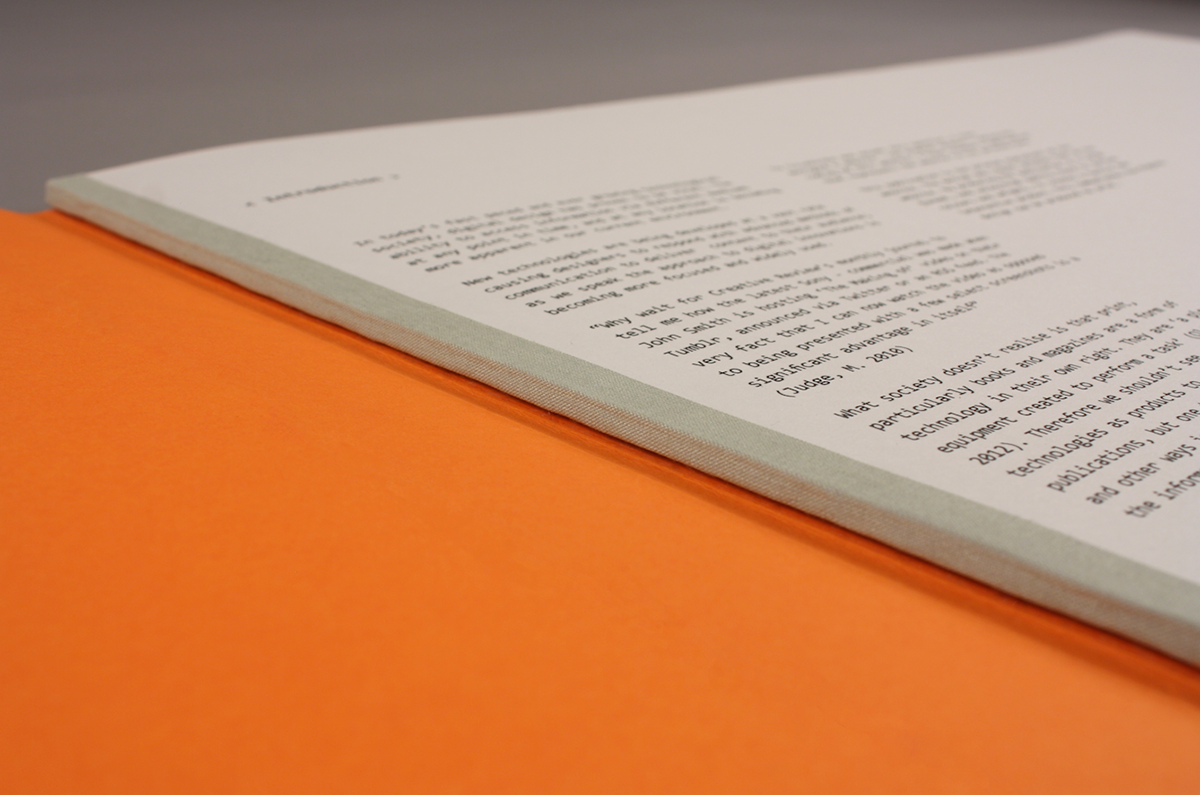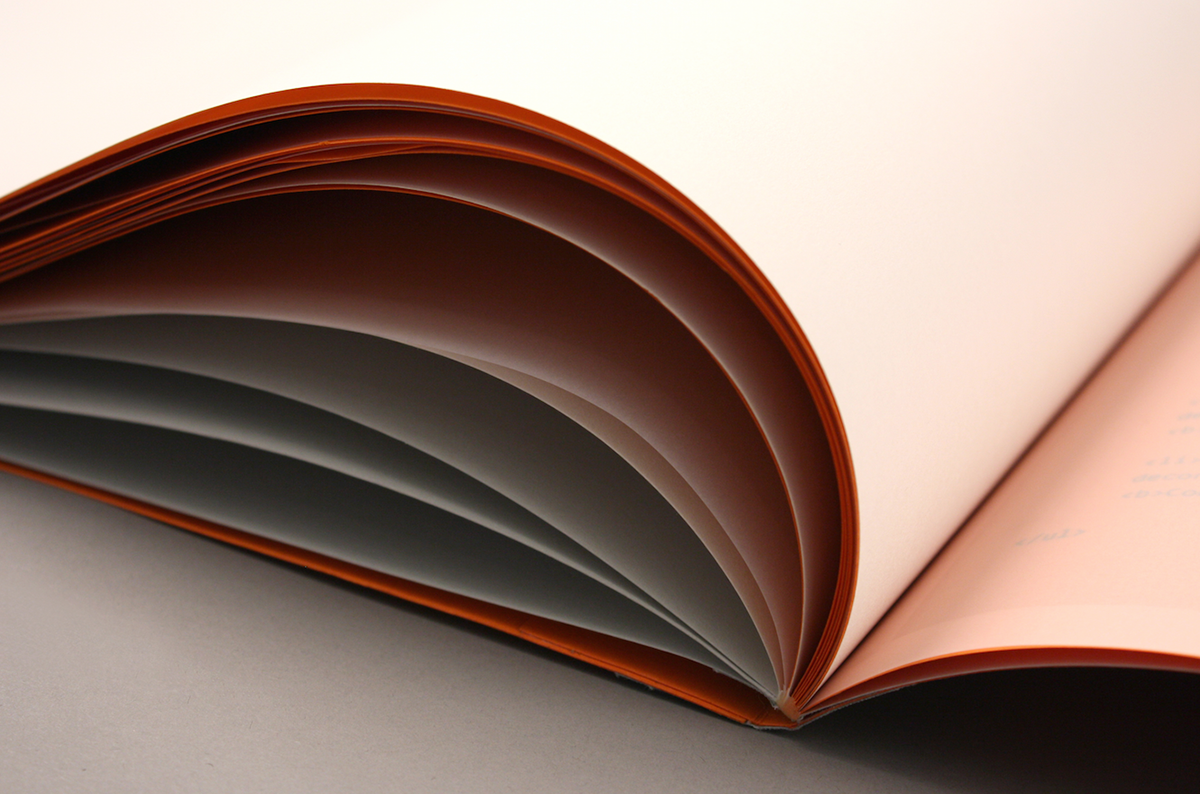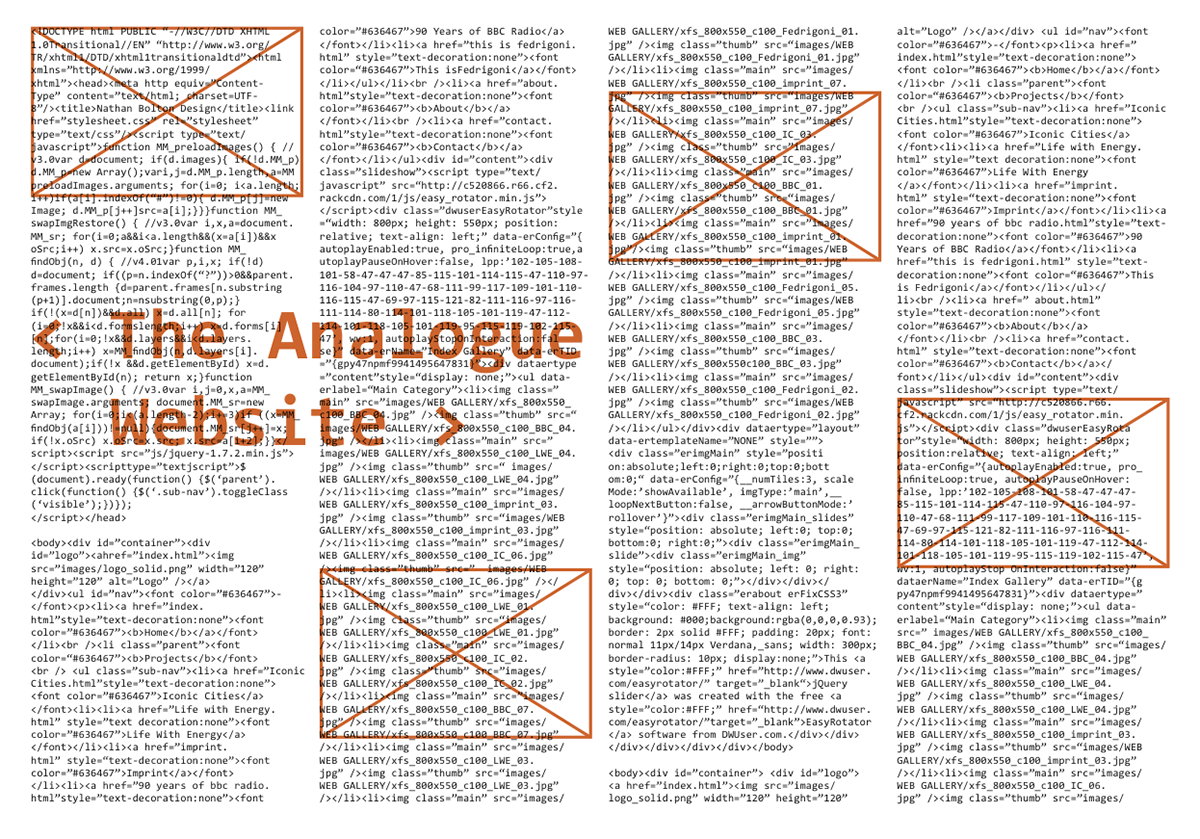
Introduction
In today’s fast paced and ever growing technological society, digital design has proven to be vital. The ability to access information via different mediums at any point in time, and at any location is becoming more apparent in our current environment.
New technologies are being developed at a vast rate causing designers to respond with advanced methods of communication to deliver content to their audience; as we speak the approach to digital innovations is becoming more focused and widely used.
Through this turn of digitalisation, we have seen printed products being transformed
into its digital equivalent. Examples can be seen through various established magazines such as Computer Arts, Print and Wired. These examples have taken their original printed state and redesigned them as a digital product, in doing so they can change how it is interacted with by using motion, sound and video to create a whole new experience for the user.
into its digital equivalent. Examples can be seen through various established magazines such as Computer Arts, Print and Wired. These examples have taken their original printed state and redesigned them as a digital product, in doing so they can change how it is interacted with by using motion, sound and video to create a whole new experience for the user.
In contrast, how can a digital product be produced as a print?
Concept
Use the background information / coding of a digital product to create a printed product.
By using the coding from a website and directly translating the design of the website to a printed page, it will show how a digital product can be infact printed. The aesthetics of the printed product will take on those of the digital counterpart, in essence the website will be printed.
The aim of doing this is to show how print and digital can be combined together. We see printed products turned into it's digital alternative, but not often the other way around. This will show how a digital product can have a tactile nature like print offers.
The Publication
The publication pushes the use of craft, stock and format throughout to enhance the tactile nature that print offers. In order to achieve this the publication has been created at A2 format, this means the user has to physically interact with the product as its not something you can hold in your hands and flick through. High quality stock has been used throughout the product, these are at three different weights, which signify the hierarchy of pages that would be present on a website.
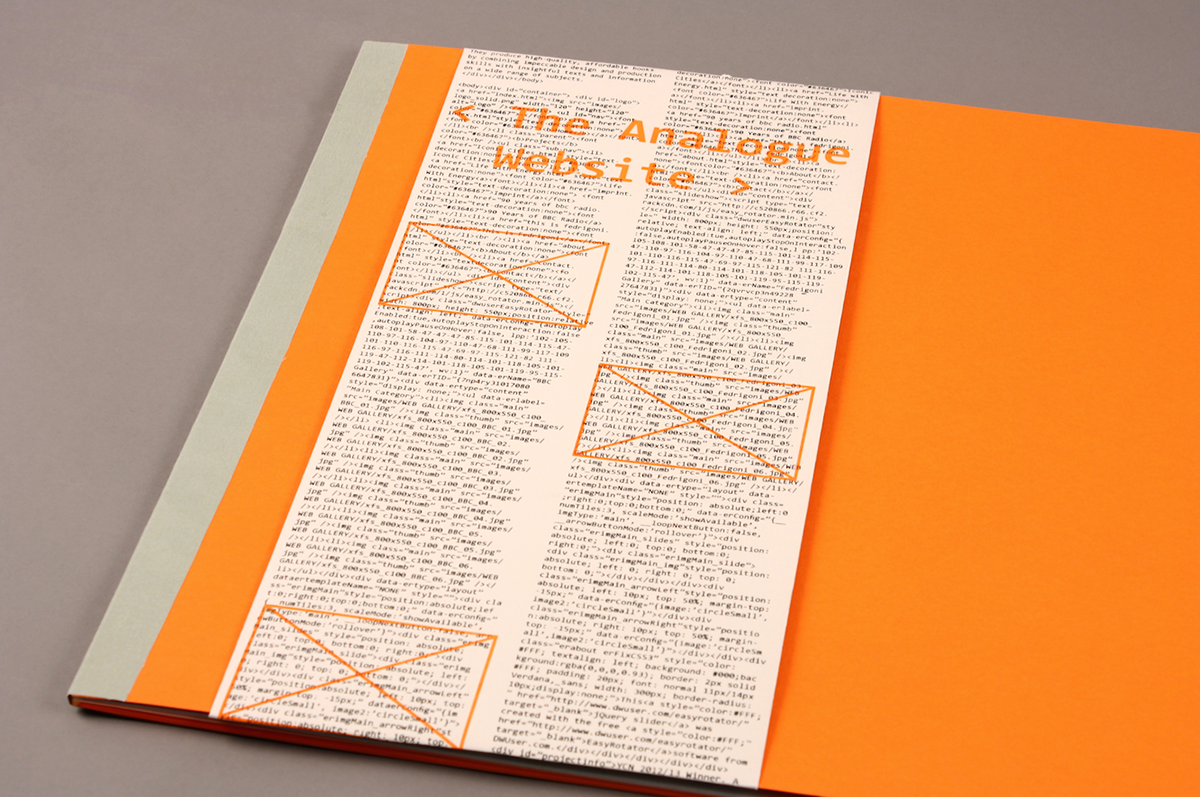
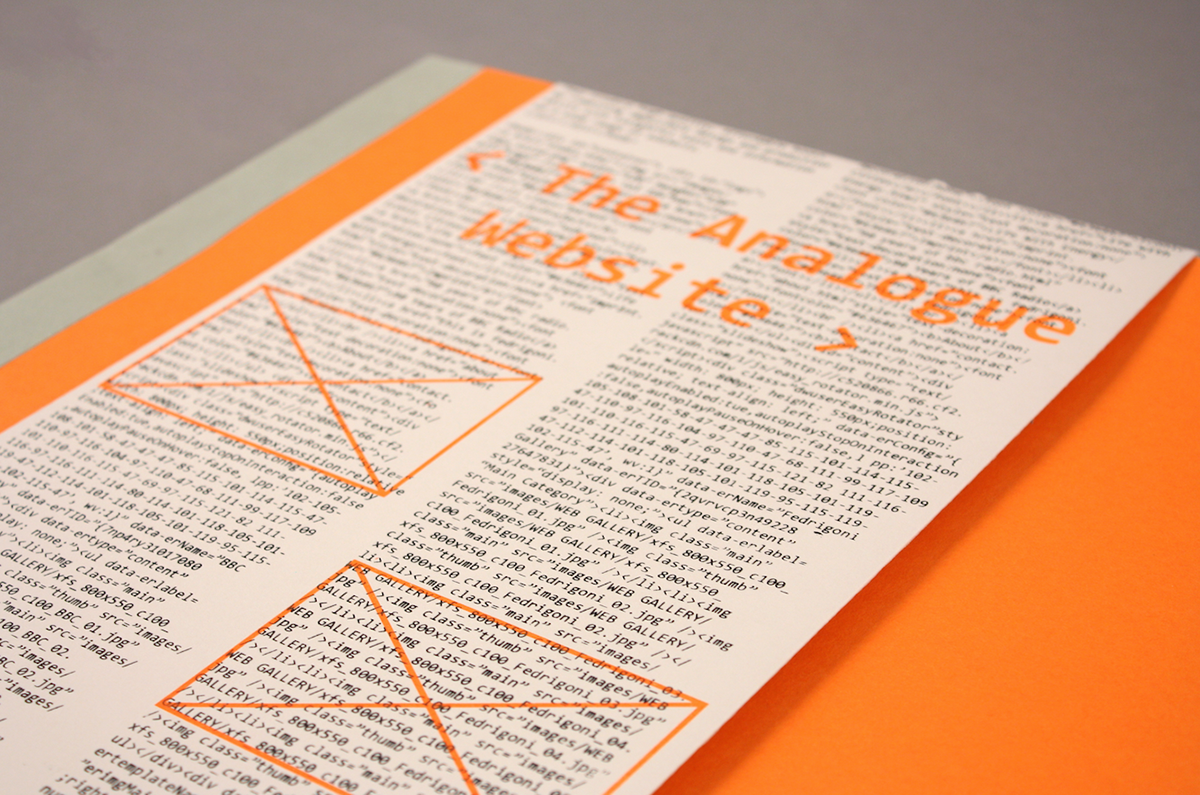

Publication Wrap
To link the publication further into print the book wrap is a screenprinted poster that folds down to fit around the front cover of the product. With this being screenprinted it opens up the investigation of manual print vs digital print - as the inners of the product are digitally printed, again harnessing in on the main concept of the product. The wrap takes the content of the publication, but displays it in a different format and across a different media, showing how adaptable the content of a digital product can be when it comes to translating it to print.
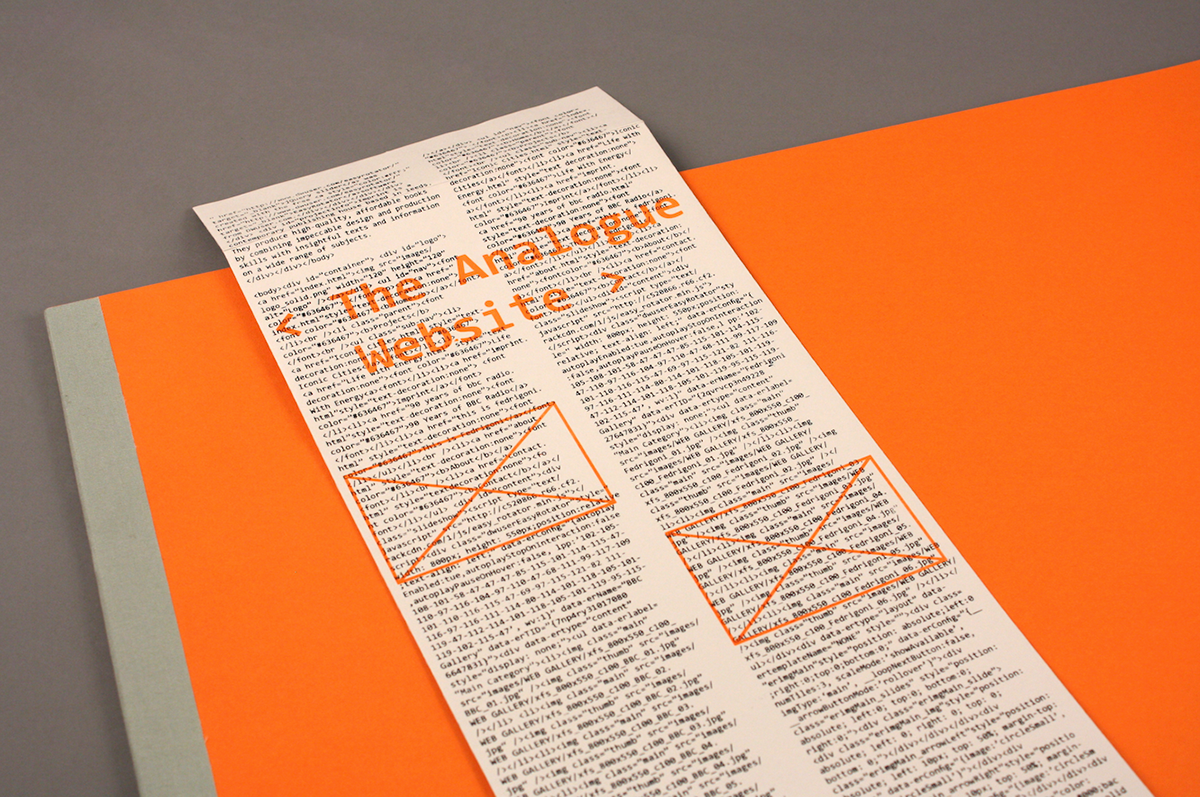
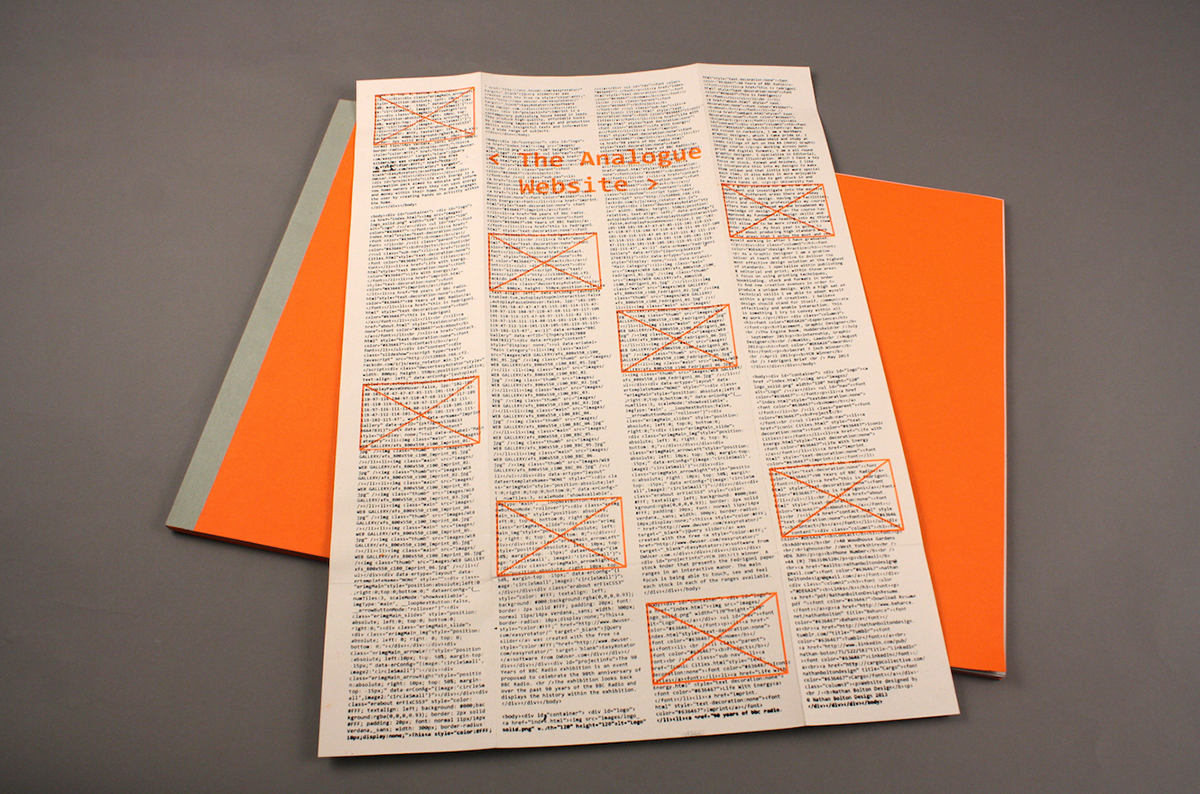
The Content
The content of the publication is taken directly from the code of a website that I built specifically for this project. The code is displayed on the page in exactly the same way as the website would appear on a screen, showing that a digital product can be translated to a printed page. The publication uses the links of the website as the navigation throughout the product, along with other aesthetical appearances such as font choice and page numbering - these are relate back to the digital product to show that the printed product is directly influenced from the digital counterpart. Each page within the publication is split over two pages - a trace layer which holds the image of the page from the digital product and the printed page which is underneath. When the user looks at these pages together is shows how the coding of the printed page matches that of the image from the digital product, hence showing that a digital product can be printed.
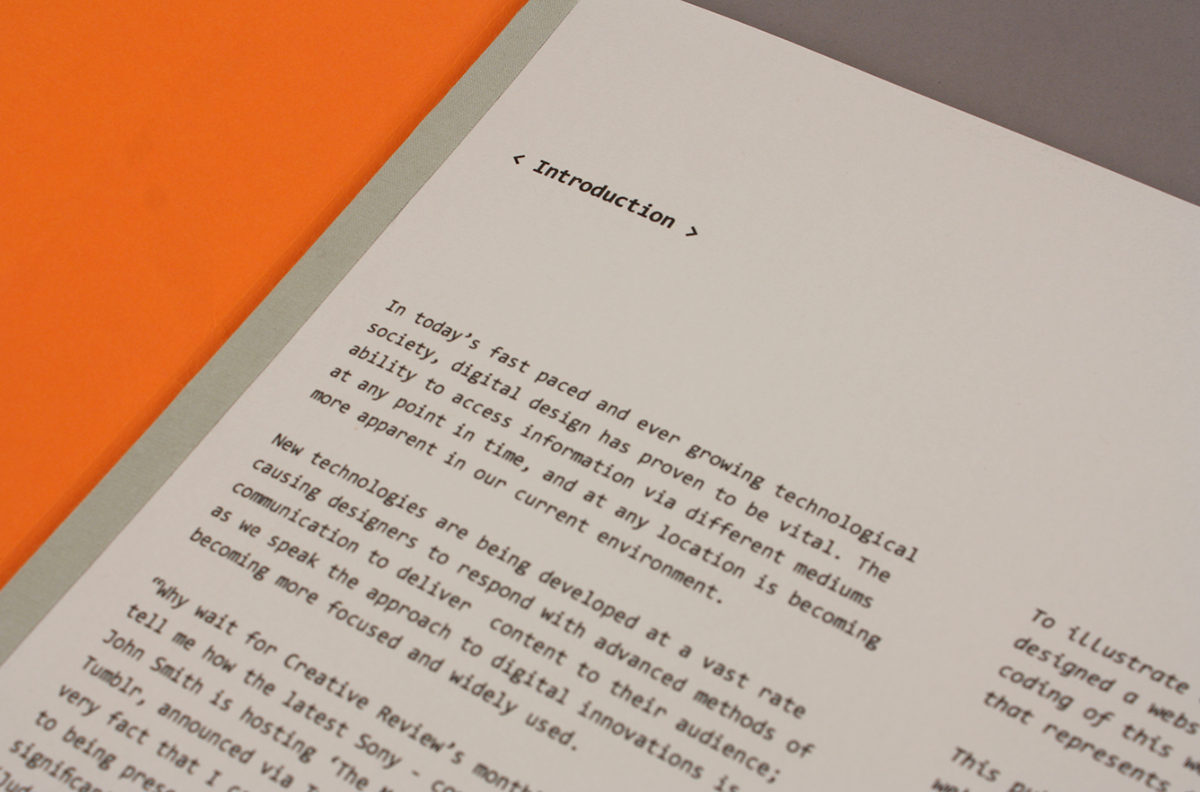
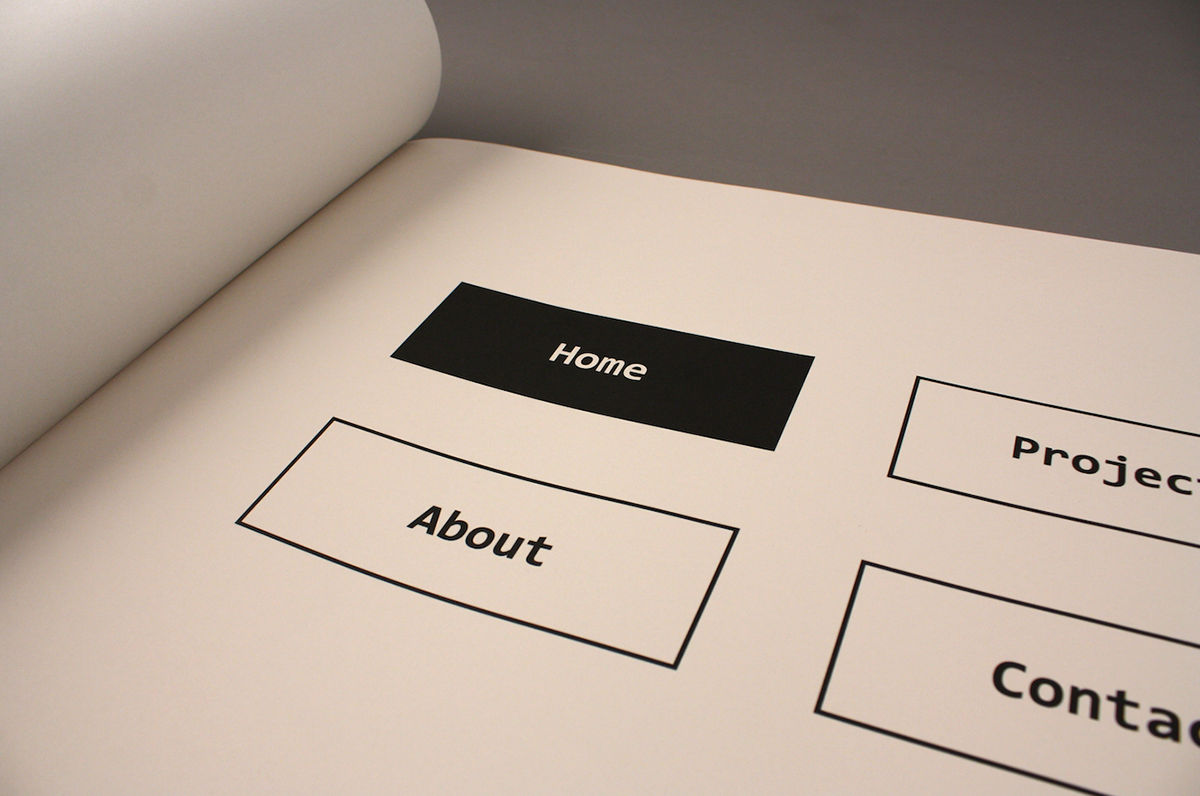
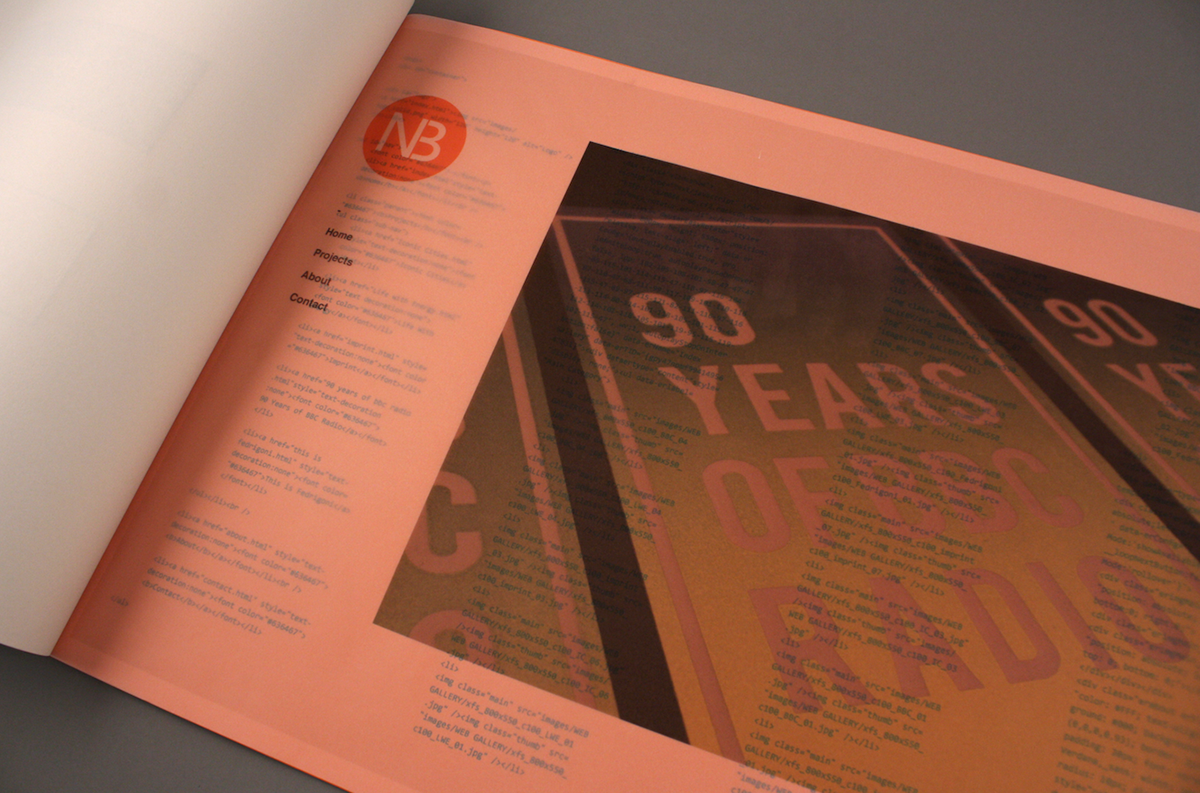

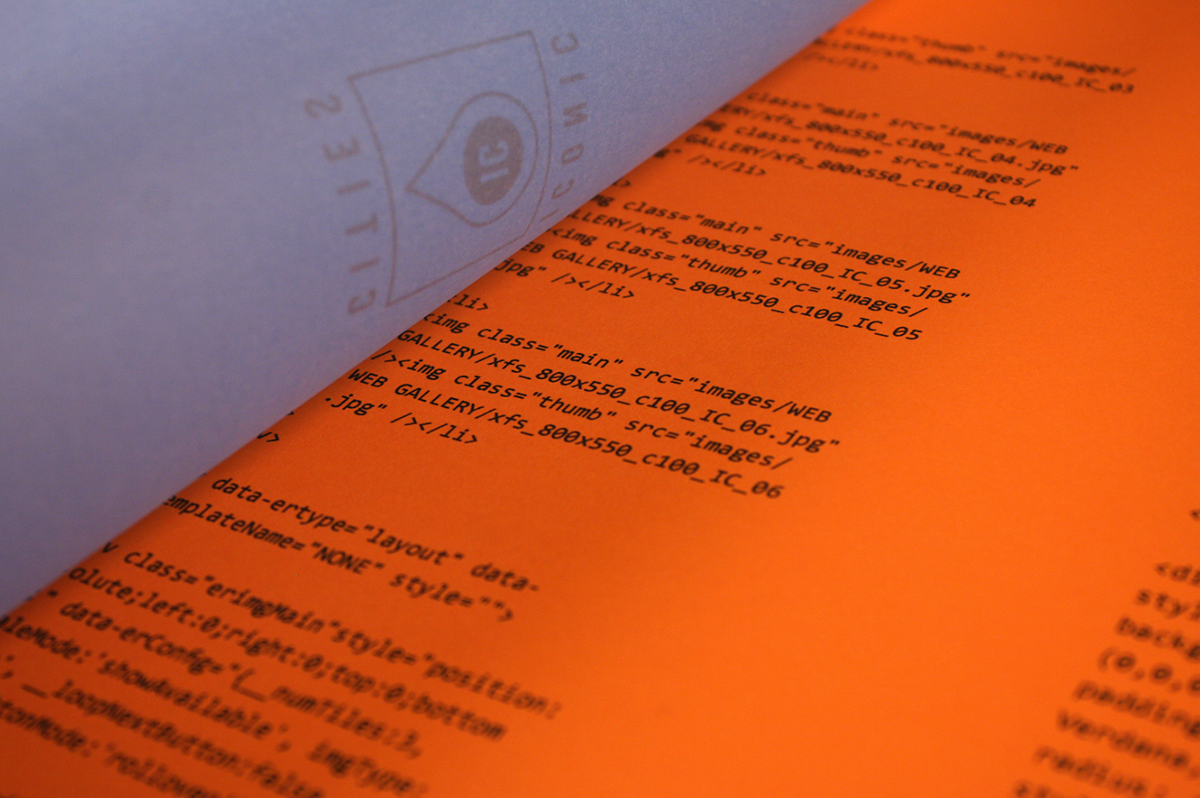
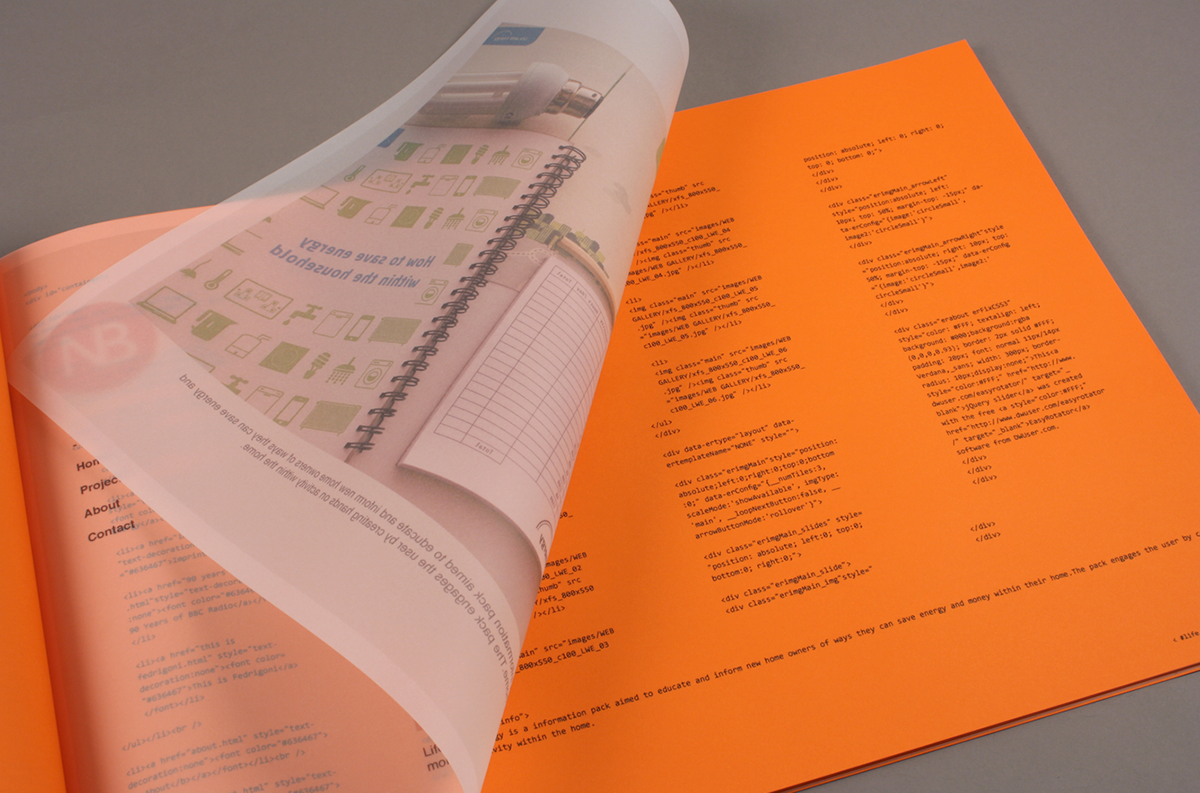
The Craftmanship
The whole idea and communication of the publication is to show that digital products can take on the characteristics of a printed publication. We see digital design as an external product because it lives on a screen this means you never to get physically hold the product or own it.
Therefore use of printing techniques, page formats and stock have been vital throughout the printed product to show the user how texture, ink and stock can influence how you interact and understand a product. These elements have shown how a digital product can be as tactile as print and essentially hold the same aura that print does.
